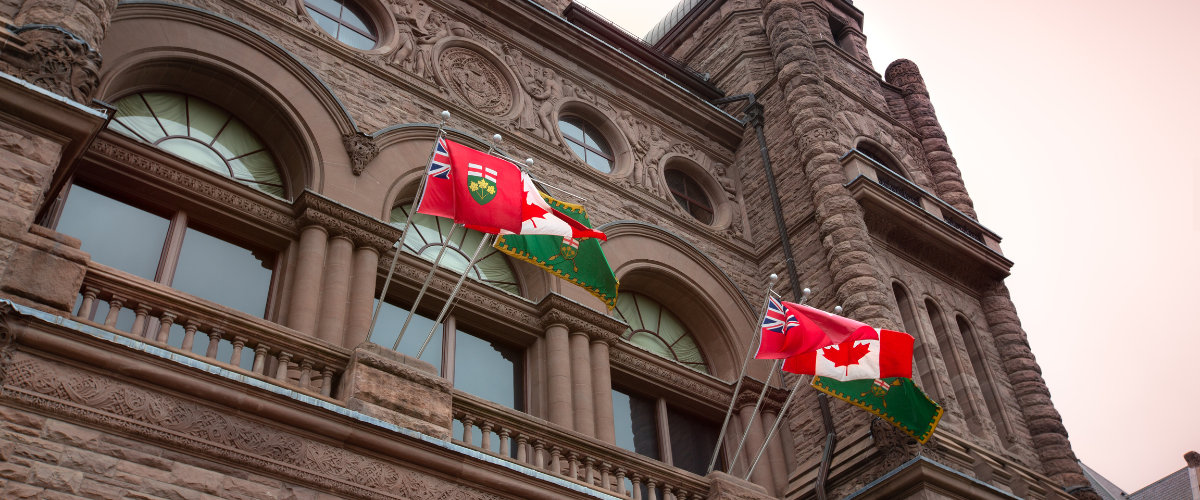The newly elected Government of Ontario released its budget on Thursday, May 15. Titled “A Plan to Protect Ontario,” the budget aims to build a more competitive, resilient, and self-reliant economy amid rising U.S. tariffs and ongoing economic uncertainty. It outlines initiatives to protect workers, businesses, and communities.
Our Research & Advocacy team dove deep into the budget to identify tactics that will move the needle and reduce poverty, and what still must be done. Read on for their findings.
Key highlights that support Daily Bread’s advocacy pillars
At Daily Bread, we focus on three advocacy pillars that we know will build a future without food insecurity: income supports, affordable housing and decent work. We found several updates in the 2025 Ontario Budget that support these areas.
Affordable housing:
- Starting in 2026, municipalities will have the option to reduce the municipal property tax rate for eligible affordable rental housing units by up to 35%.
- $20 million to expand shelter capacity and create additional temporary accommodation spaces; and
- $5.5 million to top up the Canada-Ontario Housing Benefit that helps people in shelter to permanent housing.
Income supports:
- Ontario Disability Support Program (ODSP) rates remain indexed to inflation.
- Ontario Works (OW) continues to focus on employment readiness, with investments in integrated employment services.
- $303 million over three years for mental health and addictions services, including supports for low-income and at-risk individuals.
Decent work:
- An additional $705 million over three years for the Skills Development Fund, to support training and upskilling for workers in high-demand sectors.
- A $50 million boost to the Better Jobs Ontario program, which provides financial support for mid-career workers to retrain for in-demand jobs.
- $20 million for new training and support centres (action centres), providing immediate transition supports and services to laid-off workers.
- $16.5 million for programs for Black youth to develop skills for careers in high-demand fields like trades, tech, health, film, and the arts.
- A new ‘Protecting Ontario Account,’ a fund of up to $5 billion to support businesses.
What’s still needed to tackle poverty reduction?
While these investments are welcome, more must be done to ensure that no one in Ontario is left behind—particularly the growing number of people struggling to afford basic needs. Below are key areas where urgent action is still needed.
Build more affordable housing and provide supports for tenants:
Affordable housing continues to be scarce. As per our Who’s Hungry 2024 report, most food bank clients are living in unaffordable housing, with 73% in deep core housing need, and over 20% spending all or more than 100% of their income on rent in Toronto.
- With the province’s plan to build 1.5 million homes by 2031, it is important to ensure that at least one-quarter of these are permanently affordable, supportive, or social housing, with a minimum of 50,000 units in Toronto.
- Scale up rent-to-geared-income (RGI) housing as well as work with the federal government to renegotiate social housing agreements as the current RGI-operating agreements expire in 2028 to ensure that housing remains affordable.
- Enhance supports for tenants facing or at risk of eviction.
Raise social assistance rates to lift people above the poverty line:
Who’s Hungry 2024 shows that 29% of food clients rely on social assistance as their primary source of income. Inadequate social assistance rates are forcing hundreds of thousands of Ontarians into deep poverty. Worse, individuals lose the housing component of their benefits if they become unhoused, creating a devastating cycle.
- Raise ODSP and OW rates above the poverty line to ensure people with disabilities can afford the necessities for a dignified life.
- Exempt the forthcoming Canada Disability Benefit from clawbacks to ODSP, RGI calculations, and other government and private insurance benefits to avoid penalizing people with disabilities for receiving this new Benefit.
Address child hunger
Childhood hunger is a growing crisis, with children and youth making up 23% of food bank clients.
- The province should match Toronto’s historic investment in a universal Student Nutrition Program to ensure no child goes hungry and ease the burden on families facing food insecurity.
Develop a strong Poverty Reduction Strategy (PRS)
The current Ontario Poverty Reduction Strategy ends in 2025.
- Develop a new, comprehensive PRS in consultation with communities across Ontario.
- Include specific targets, timelines, indicators for measuring progress, and robust reporting mechanisms to ensure accountability and transparency.
Supporting workers
Thousands of Ontario workers have already been laid off due to rising tariffs, with more at risk in the months ahead.
- Provide more direct support to workers who are laid off caused by tariffs.
While the budget contains initiatives that will help Ontarians during this cost-of-living crisis, much more needs to be done to achieve a province without food insecurity. At Daily Bread, we remain committed to working closely with the government to advance solutions that eliminate hunger and poverty.
Join us in our advocacy work! Learn more about our policy recommendations in our 2025 Provincial Budget Submission and use our online tool to urge your MPP to take bold, urgent action to ensure that no one in Ontario goes hungry.
